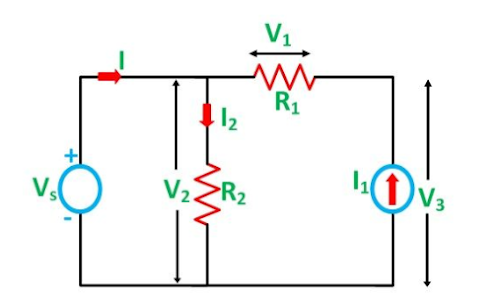Substitution Theorem
Substituation Theorem expresses that the voltage over any branch or the current through that part of a system being known, the branch can be supplanted by the mix of different components that will make a similar voltage and current through that branch. At the end of the day, the Substitution Theorem says that for branch identicalness, the terminal voltage and current must be the equivalent.
Contents:
- Explanation of Substituation Theorem
- Steps for solving network using Substituation theorem.
The idea of the hypothesis depends on the replacement of one component from another component. This hypothesis gives instinct on the conduct of the circuit. It additionally helps in demonstrating a few different hypotheses.
Be that as it may, the replacement hypothesis can't use for comprehending the hypothesis which has multiple sources which are neither associated in arrangement nor equal.
Clarification of Substitution Theorem
Essentially one can say that the Substitution Theorem is the supplanting of one component with another identical component. In a system, if any component is subbed or supplanted by a voltage or current source whose voltage and current across or through that component will stay unaltered as the past system.
Let us comprehend the hypothesis with the assistance of the circuit graph demonstrated as follows:
Here different protections R1, R2, R3 is associated across with the voltage source (V). The current I, is moving through the circuit, which is partitioned into current I1 coursing through the obstruction R1 and the current I2 moving through the opposition R2. V1, V2 and V3 are the voltage drop over the opposition R1, R2 and R3 individually.
Presently if the opposition R3 is subbed by the voltage source V3 as appeared in the circuit outline underneath:
In the circuit graph appeared underneath the opposition, R3 is supplanted by the current moving through that component, for example I1
In both the cases appeared above if the component is subbed by the voltage source or the current source, at that point additionally, the underlying states of the circuit doesn't change.
This implies the voltage over the obstruction and current moving through the opposition unaltered regardless of whether they are subbed by different sources.
Steps for Solving Network Using Substitution Theorem
Stage 1 – First get the concerned branch voltage and the current moving through the branch given by Vxy and Ixy as appeared beneath in figure A.
Stage 2 – The branch might be subbed by an autonomous voltage source as appeared above in figure B
Stage 3 – Similarly the branch might be supplanted by an autonomous current source as appeared underneath in the circuit chart C
Stage 4 – Hence it is seen that the voltage drop and the current moving through the circuit An appeared above will be same on the off chance that it is subbed by any autonomous voltage or current source appeared in the figure B and C.
This is about Substitution Theorem.











No comments:
Post a Comment
If you have any Doubt, Please let me know